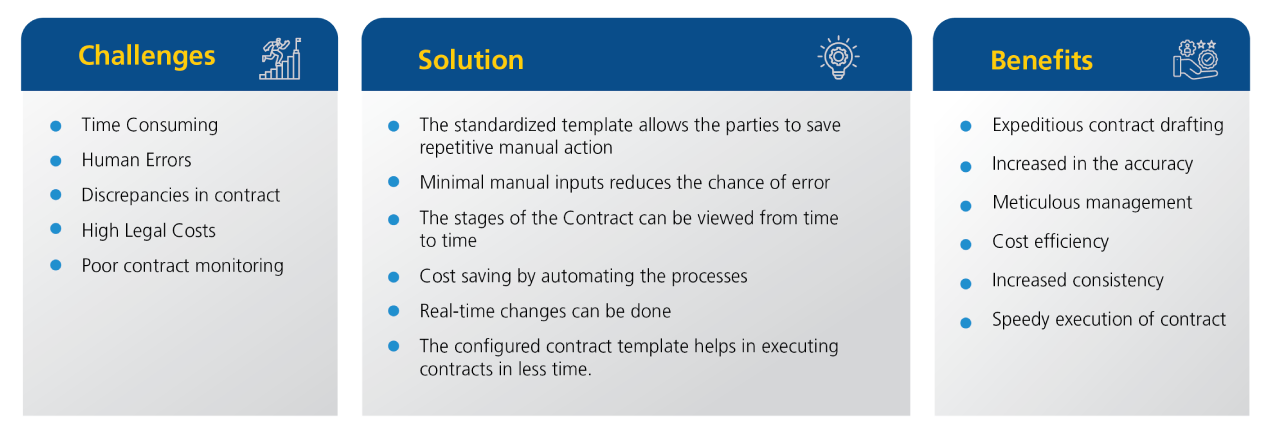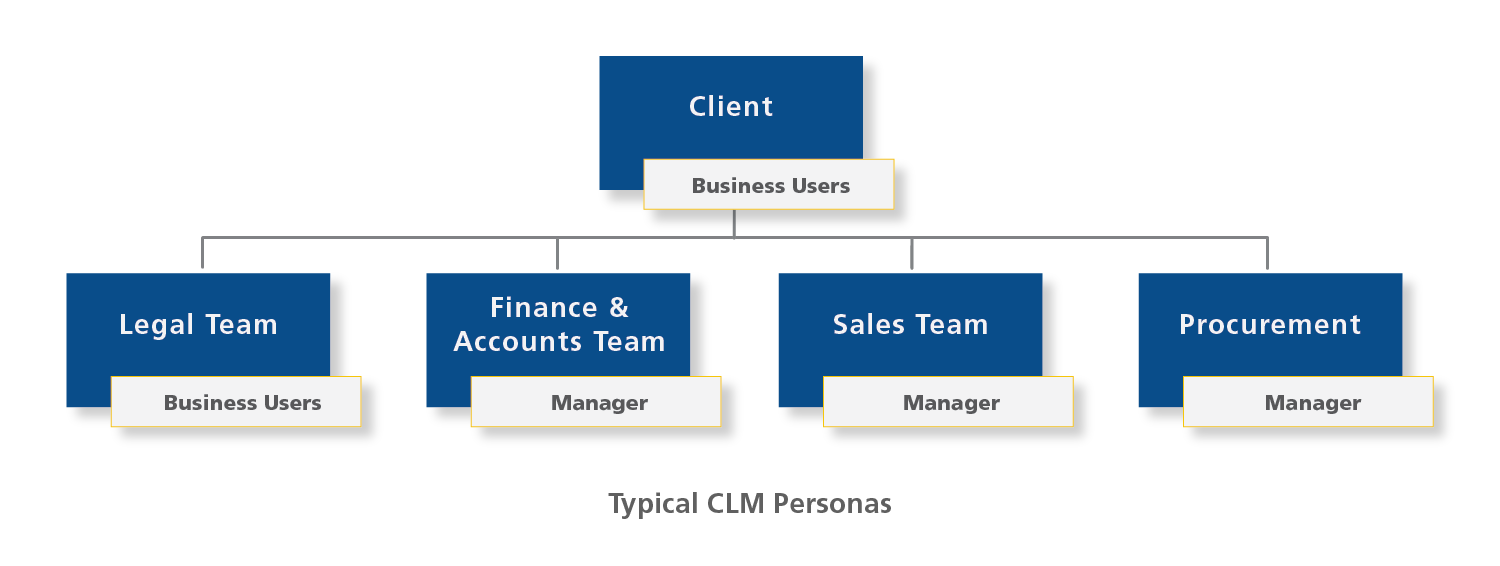Contract Template: Prominent Element of Contract Lifecycle Management
CLM: Contract Template
A contract template, an essential part of a Contract Lifecycle Management (CLM) system, is a contract framework between two or more parties. These templates are frequently employed when the same agreement is drafted regularly with minimal content modifications. A clause library, an integral component of a contract template, is a repository of standard and custom clauses with pre-approved languages that one can insert into a contract template which allows reusability and aids scalability.
Contract templates are pervasive in fields where contracts are needed and used. This suggests that whenever two or more parties enter a contract, there is scope for contract templates to be utilized. Therefore, contract templates are useful for everyone, from large-scale industrial sectors to local distributor dealerships. The type of contract templates that will be of use will vary from person to person, depending on the purpose of such a contract.
For example, a local distributor may need a Dealer Distributorship Agreement, while a research-oriented multinational company may require the necessary use of non-disclosure agreements.
Examples of contract templates:
- Master Service Agreement
- Independent Contractor Agreement
- Non-Disclosure Agreement
- Retainer Agreement
- Sales Contract
- Indemnification Agreement
- Intellectual Property Agreement
Challenges and Benefits of Contract Template
With complex and evolving business situations, organizations need to make it easy and quick to create contracts. Contract templates assure business stakeholders about the language’s accuracy and allow them to focus on strategic business terms instead of having them worry about the standard legal clauses.

Challenges & Benefits of Contact Template
Accessibility
The primary users of the CLM system are the legal team and other departments such as sales, procurement, finance, and accounting teams.

Essentials
A contract template consists of clauses capturing the contract’s essential terms and conditions and fields for information like effective dates, monetary values, etc. For instance, a contract template for an employment agreement must contain the terms of employment, employee responsibilities, compensation, and benefits.
A digital contract template includes a combination of the following:
- Standard/boilerplate clauses are standard clauses that form part of every contract.
- Alternate clauses are pre-approved alternatives for the other clauses in a template.
- Conditional clauses include the conditions whose fulfillment is necessary for the performance of a contract.
- Metadata field tagging includes the dynamic fields that will fetch the values input by a user on a contract form.
- E-signature tags are used to collect the information (like first and last name, date, signature, etc.) to complete the contract document signature.
Contract templates can be defined with respect to individual businesses and have the privilege to act upon the termed contract obligations.
Contract Template Outline
As per our experience, contract templates can be configured across any cloud-based CLM SaaS products that are centralized and easy to configure and deploy. A CLM SaaS system can create a new contract template suitable for a contract (authored/received) or any amendment by associating existing clause templates, terms, contract attributes, user groups, and other properties to it from scratch. The centralized clause library and contract attributes are easy to access from the contract editor and tag in the contract template. This makes the process faster and easy to save from the editor itself.
The steps for the creation of the contract template:
- Edit the pre-configured template in the system or as received from the client in the contract editor.
- Categorize the clauses as per the client’s requirement into Standard, Conditional, and Alternate clauses.
- Tag the clauses and respective data fields in the template.
- Tag the conditional metadata fields in the clauses.
- Write a rule in the system to populate the condition-based clauses.
- Tag the signature metadata fields to be signed by the signatories.
- Get the entire document reviewed by legal experts.
- Upload the template in the system to be visible on the user interface.
There is another approach for the creation of contract templates within less time. The Global Template approach satisfies most of the client’s requirements and configures the business templates easily.
Businesses can have various templates which can be differentiated based on country, region, language, etc. So, the global template contains the most common clauses and required information which can be used efficiently. Hence, the other business template can be derived using the global template easily and effectively.
CLM Across Industries
In an organization’s buy and sell sides, CLM reduces variations and enables alignment in the legal and administrative processes. The presence of legal documents such as Master Services Agreements, Employment Agreements, and Non-Disclosure Agreements is pervasive in organizations across manufacturing and finance industries. The multitude of contractual obligations is high and needs to be conducted efficiently.
For example, in the manufacturing industry, legal compliance is integral from sourcing raw materials to following up on deliverables in the project as per contract. CLM tools enable efficient monitoring of the entire process while reducing time-to-sale, increasing sales efficiency, and mitigating corporate threats.
Implementing a CLM system in the finance industry reduces risks with the help of an advanced compliance management framework throughout the lifecycle of contracts from generation to archival. Financial enterprises can stay updated on the changing compliances through quick and easy modification of clauses.
Besides these two industries, CLM is widely adopted across B2B, retail, distribution, healthcare, media & entertainment, and aviation industries.
Concluding Statement
While designing the contract template, you need to follow the best practices, including clause review, by involving your legal team and ensuring the contract’s usability leads to faster contract processing with fewer errors and no manual interventions.
Keep an eye out for our forthcoming blog, which will discuss an integral part of the template and its benefits.
Latest Blogs
A closer look at Kimi K2 Thinking, an open agentic model that pushes autonomy, security, and…
We live in an era where data drives every strategic shift, fuels every decision, and informs…
The Evolution of Third-Party Risk: When Trust Meets Technology Not long ago, third-party risk…
Today, media and entertainment are changing quickly. The combination of artificial intelligence,…




